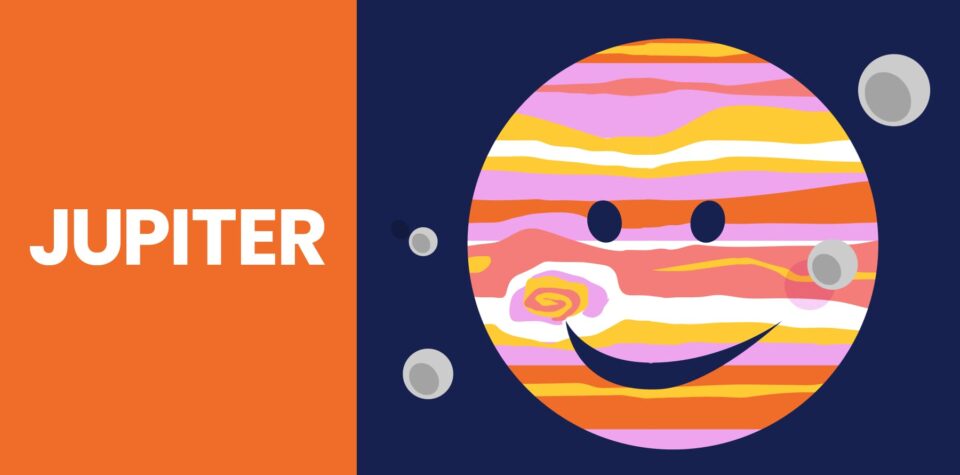
Jupiter
Jupiter, the fifth planet from the Sun and the largest planet in our solar system, has been important to people for thousands of years. Kids exploring space and the way people study it can’t help but run into it—and they’re not alone! Scientists think that because Jupiter is so big, its gravity pulls in asteroids and comets that might otherwise hit the Earth. Comet and asteroid impacts can wipe out species, disrupt the climate, and even change a planet’s orbit. Without Jupiter looking out for us, humans might not exist at all!
Jupiter also helped people discover how the universe works. When the Italian scientist Galileo Galilei discovered Jupiter’s moons orbiting the planet in 1610, it helped him prove that the Earth and other planets orbit the Sun. By watching the moons carefully over time, he also realized that they worked like a giant astronomical clock. That helped people use the sky to figure out where they were in the world and draw much more accurate maps, which helped them explore the Earth!
Facts about Jupiter
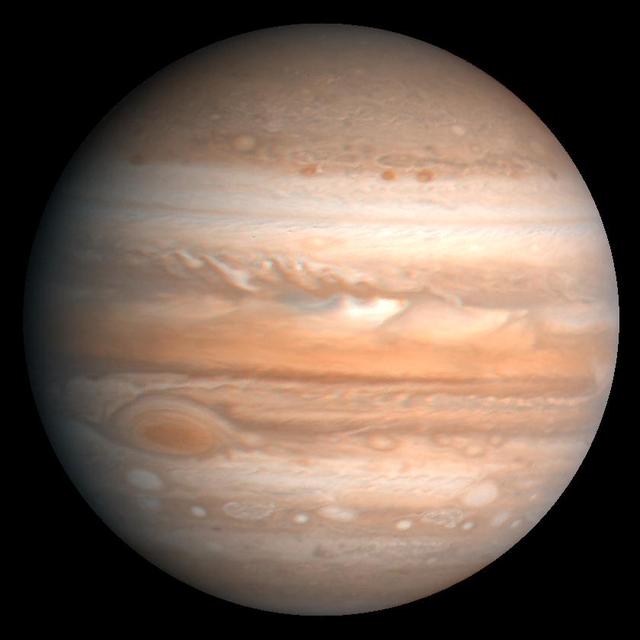
Because it’s so big and so important, people have been watching Jupiter since ancient times. In the modern era, people have sent probes to the planet, its moons, and its rings to take measurements and photos. If Jupiter is visible in the sky, you can bet that people will be pointing telescopes at it. It’s so big that people can see its cloud bands and moons with small telescopes in their backyards!
All that watching has given the world lots of facts about Jupiter, including…
How Many Moons Does Jupiter Have?
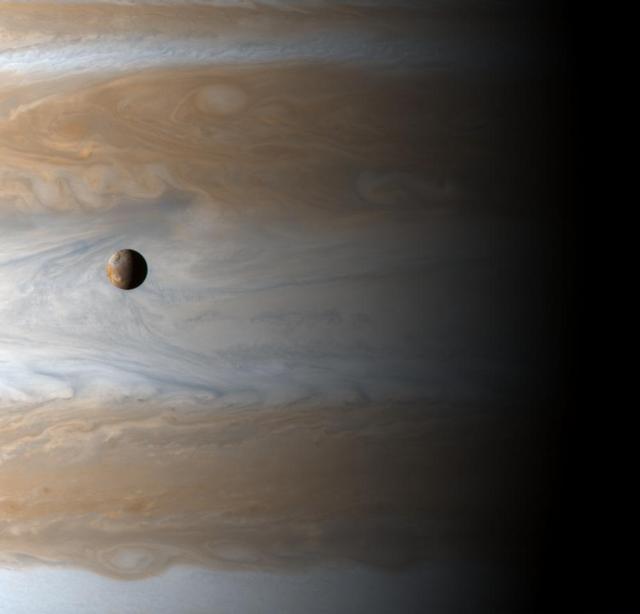
Jupiter has 79 moons. Scientists have given names to 53 of them, and another 26 are still waiting to be named.
Of Jupiter’s moons, four get the most attention—the same ones Galileo discovered back in 1610. Named Io, Europa, Ganymede, and Callisto, these Galilean moons are big and full of wonders. Io’s crust bulges from Jupiter’s gravity, creating rock “tides” that heat it up and cause dramatic volcanic eruptions. Europa is covered in ice, but scientists think a huge ocean lurks beneath its frozen surface—possibly even containing life! Rocky Ganymede is so big that it generates its own magnetic field. And ancient, crater-marked Callisto offers a treasure trove of information about what happened in the early years of the solar system.
This image shows the four Galilean moons of Jupiter. From left to right, they are Io, Europa, Ganymede, and Callisto.

Does Jupiter Have Rings?
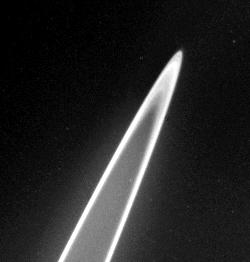
Jupiter has a set of four rings, but they’re not as spectacular as Saturn’s. Formed by dust kicked up from some of Jupiter’s small moons, they were discovered in 1979 by NASA’s Voyager I probe. The rings are called the halo ring, the main ring, and the gossamer rings. When small rocks called micrometeorites hit the moons, they knock off tiny dust particles that fly into the orbit of Jupiter. Because the rings are made of dust, they can only be seen in infrared light or when the Sun is behind them.
What Color Is Jupiter?
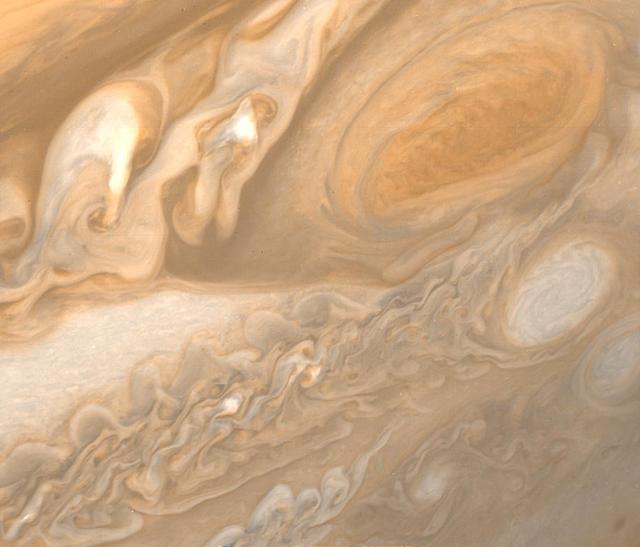
Jupiter’s true color is a mixture of red, orange, brown, and white. Swirling clouds of hydrogen, helium, ammonia, water, and more give it a dramatic, changing appearance. Seen in the sky with the naked eye or through a small telescope, however, Jupiter usually looks white, because it’s so dim that our eyes can’t pick up all the colors coming from it.
What Is Jupiter Made Of?
Like the Sun, Jupiter is mostly hydrogen and helium. But it also contains methane, ammonia ice, crystals of a chemical called ammonium hydrosulfide, water ice, and water vapor. Its atmosphere is so thick and dense that scientists aren’t totally sure what lies at its center. It may have a rocky or metallic core, or it might be gas and liquid all the way through.
How Big Is Jupiter?
Jupiter is about 20 percent larger than the second-biggest planet, Saturn. But it’s so dense that if you smushed up every other planet in the solar system into one, Jupiter would still contain twice as much material as that “super planet.” Jupiter is so big that more than 1,300 Earths could fit inside it!
How Far Is Jupiter from Earth?
People sometimes say Jupiter is around 440 million miles from Earth, but that distance can be off by over a hundred million miles! To calculate how far Jupiter is from Earth, you need to know where both planets are in their orbits around the Sun. When Jupiter and Earth are on the same side of the Sun, they’re closer to one another. But when they’re on opposite sides of the Sun, they’re much farther away. So the distance from Earth to Jupiter varies between about 365 million miles and 600 million miles.
How Long Would It Take to Get to Jupiter?
Light, the fastest thing in the universe, takes around 40 minutes to get to Jupiter from Earth. That means that when people on Earth send a signal to a spacecraft orbiting Jupiter, they have to wait almost an hour and a half to hear back from it—40 minutes for the signal to arrive and another 40 minutes for a signal to come back. Talk about a slow connection!
Spacecraft take even longer to get to Jupiter. NASA’s Voyager missions took two years to get there. And NASA’s latest mission to Jupiter, Juno, needed five years to arrive because it took a different path through deep space.

This image shows the complicated path taken by NASA’s Galileo mission on its six-year journey to Jupiter.
Jupiter’s Red Spot
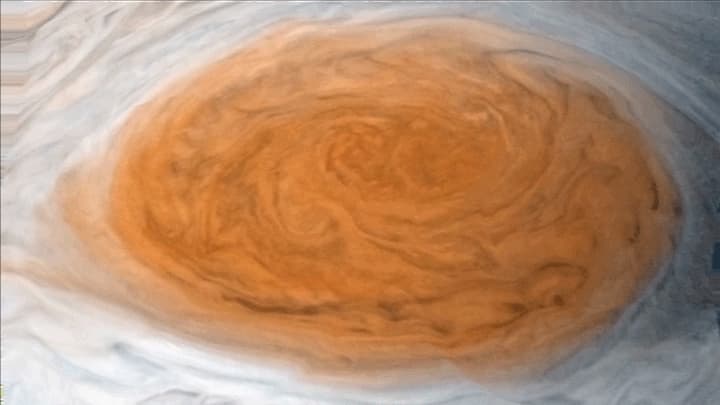
One of Jupiter’s most striking features is a giant storm in its atmosphere called the Great Red Spot. People first observed the Great Red Spot over 300 years ago. It reaches about 200 miles down through Jupiter’s atmosphere and is wider than the Earth. Its winds blow faster than 400 miles per hour and change speed over time.
Lots of other storms exist in Jupiter’s atmosphere too, and they can affect one another. In 2017, scientists discovered that the Great Red Spot’s winds changed when another big storm was close to it.
Jupiter’s Surface
It might be tempting to dream about landing on the surface of Jupiter, but that’s one technological feat we’ll never see happen. Jupiter doesn’t really have a surface, not the way that a rocky planet like Earth or Mars does. A spacecraft trying to land on Jupiter would find itself lost in the swirling winds of the planet’s upper atmosphere. If it kept traveling down looking for a surface, it would eventually be crushed by the intense pressure created by Jupiter’s gravity.
That’s exactly what happened to a probe launched by NASA’s Galileo spacecraft in 1995. The Galileo Jupiter Atmospheric Probe fell through Jupiter’s atmosphere for about an hour, making it 112 miles down before the atmosphere’s pressure destroyed it.
Together Time
Jupiter is fun to study with kids because it’s one of the brightest objects in the night sky—so bright you can often see it with the naked eye. To see Jupiter for yourself, check out our post on why planets are round. At the bottom, we’ve included instructions for finding the planets at night.
